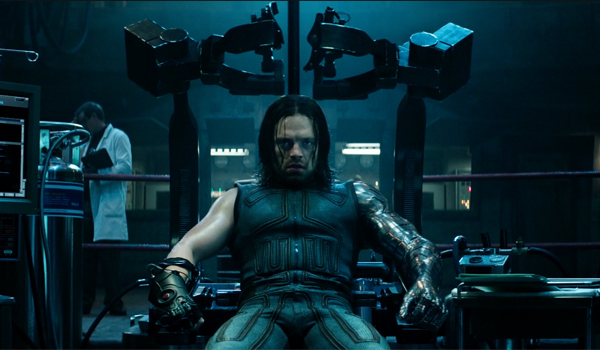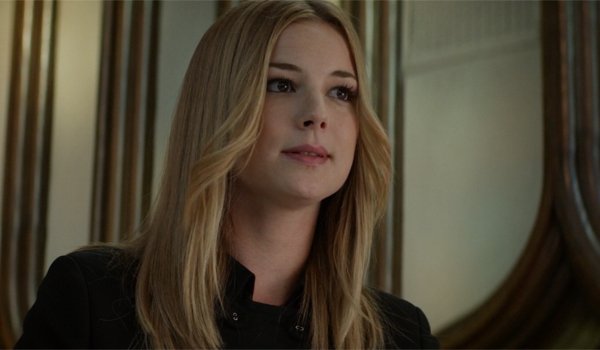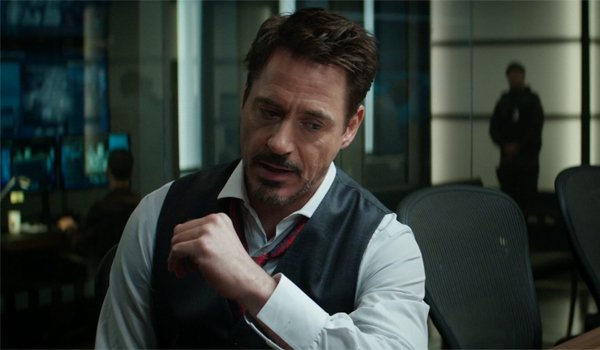12 Awesome Marvel Facts We Learned From The Captain America: Civil War Commentary

The vast majority of movie-lovers will never be able to sit on a couch with their favorite filmmaker and have them intimately discuss their work scene-by-scene, but that's exactly why commentary tracks are so great. More often than not, they prove to be wonderful treasure troves of trivia and anecdotes, and there are few better ways to learn about the details of a movie. Because of this, we were tremendously excited to learn there would be a commentary attached to the digital release of Captain America: Civil War, and we learned a ton of great stuff listening to it this past weekend.
Altogether, the commentary track for Captain America: Civil War is two-and-a-half hours of directors Joe and Anthony Russo and screenwriters Christopher Markus and Stephen McFeely talking about their experience building the blockbuster, and it's fantastic. We learned a ton of great stuff, and we've put together all of the highlights in the list you'll find below. Read on, and enjoy!

Helmut Zemo was originally chasing a completely different MacGuffin
When we first meet Daniel Bruhl's Helmut Zemo in Captain America: Civil War, he is on the hunt for a little red book with a black star -- which notably contains the phrases necessary to transform Bucky Barnes into The Winter Soldier. It's a rather simple MacGuffin, but early drafts included a much more complicated one. As Christopher Markus and Stephen McFeely reveal on the commentary, the original idea was to have Zemo looking for "The Mind Crown" -- which is the device we see put on Bucky's head in Captain America: The Winter Soldier and the opening of Civil War. It was replaced in aid of making things simpler.

Quicksilver is featured in Captain America: Civil War
Fans of the Marvel Cinematic Universe will remember that the continuity's version of the speedy Quicksilver (played by Aaron Taylor-Johnson) died in The Avengers: Age of Ultron. Even so, the filmmakers of Captain America: Civil War found a way to include him in their movie. As the writers and directors point out on the commentary track, if you look at some of the production design featured in Scarlet Witch's room in the Avengers compound, you'll notice that there are some photographs of a young boy -- who is identified as Pietro Maximoff.

Zemo originally had a very different introduction
You can read more about this one here, but the long and short of it is that the original script for Captain America: Civil War had Helmut Zemo making his entrance into the film by killing a whole bunch of people. After it was decided the book was the way to go MacGuffin-wise, the script included a scene where the item was on the block at a black market auction. Rather than simply pay for it, Zemo gassed the entire room, and stole it.

No, Vision does not go shopping
As if to settle any possible debates amongst fans, one item discussed by the Captain America: Civil War writers and directors is whether or not Paul Bettany's Vision actually goes out and buys the various clothes he wears, or if he just creates them. There was no debate here, as they firmly said that Vision just creates what he wears. As the filmmakers additionally point out is that with this being true, it also basically means that the android is naked at all times, with just his "skin" taking on a different appearance.

Why Black Widow is a particularly hard character to write
Stephen McFeely and Christopher Markus are very upfront about the character that was hardest to write for in Captain America: Civil War, with that distinct honor going to Black Widow. Noting that quips and snappy lines can be a crutch, the screenwriters said they can't really do that with Black Widow because she is such a mission-oriented hero. This isn't to say that she can't be funny, but that her humor requires an appropriate moment. Whenever McFeely and Markus slipped up, the first person to call them on it would be Scarlett Johansson -- to whom they happily capitulated, recognizing that at this point she knows Black Widow better than anyone.
Your Daily Blend of Entertainment News

The movie doesn't make it 100% clear how Sharon Carter is related to Peggy Carter
Captain America: Civil War brings the epic journey of S.H.I.E.L.D. co-founder Peggy Carter to an end, and she gets a tearful goodbye in a funeral scene early in the movie. It's at this event that Emily Van Camp's Agent 13 reveals herself to be Sharon Carter, a relative of Peggy's, but she doesn't actually make her connection entirely clear. In her eulogy, Sharon refers to her as "Aunt Peggy," but the Russo brothers and Stephen McFeely and Christopher Markus make it clear in the commentary that Peggy is her great aunt, not her mother or father's sister.

Every frame of Black Panther in Captain America: Civil War is painted with CGI
The art and costume departments did an absolutely exceptional job designing the Black Panther costume in Captain America: Civil War, and Chadwick Boseman wore a costume that looked very similar to that design while on set -- but it may shock you to learn that every frame of the character in the movie is painted over with CGI. Throwing a ton of credit to the folks at Industrial Light and Magic for their incredible albeit invisible work, the Russos explained that both realities of the costume's functionality and the shimmer created by the suit's fictional Vibranium weave construction meant that bringing it to the screen properly meant using digital effects.

The intense process Robert Downey Jr. goes through before his scenes
It's during the scene where Robert Downey Jr's Tony Stark and Chris Evans' Steve Rogers sit down for a talk over a pair of FDR pens that the Russo brothers talk about the process of working with Downey Jr. and getting him into character. For the eight weeks the actor was shooting, the filmmakers would go over to his house every Sunday, and they'd spend hours finding a way to give RDJ an organic connection to his scenes. Without compromising story, they'd rework the scene to perfectly fit Downey Jr.'s interpretation of Tony Stark, and then they'd go to set with it entirely ready to go.

The special way the Spider-Man auditions wound up helping Captain America: Civil War
It was no secret that Captain America: Civil War was auditioning actors to play Spider-Man while the movie was in the midst of production, but what's kind of funny is that the drawn out process actually wound up helping the blockquote. Those who came in for the role were given a version of the scene between Peter Parker and Tony Stark, and it was in seeing that key scene played over and over again that the film's writers and directors figured out the best way that it should work.

The surprising secret behind Captain America: Civil War's Empire Strikes Back reference
During the big Leipzig Halle airport battle sequence, Joe and Anthony Russo talk extensively about the way that the Empire Strikes Back reference came together, and even admit that they were against the idea at first. The whole thing started when they realized they needed a way to take both Tom Holland's Spider-Man and Paul Rudd's Ant-Man/Giant Man out of the sequence, and they worked with the writers to come up with the webbing around the legs. They were concerned for a time about the direct reference ringing false, given that EVERYONE has seen Empire Strikes Back, but here's the surprising, funny secret: Tom Holland isn't part of that club.

Why Captain America: Civil War had to be particularly careful about introducing Wakanda
In the world of Marvel Comics, there are few places more breathtaking than the nation of Wakanda, and in 2018 director Ryan Coogler will transport audiences there in the first ever Black Panther movie. It's because of this, however, that Joe and Anthony Russo had to be particularly careful with the mid-credits sequence of Captain America: Civil War. As the directors note in the commentary, they wanted the scene to tease the introduction of Wakanda, but they simultaneously wanted to do absolutely nothing to step on Coogler's toes. Fans have been waiting for years for the revelation of the African nation, and hopefully it will be quite special.

The amazing Spider-Man line Tom Holland ad-libbed in the post-credit scene
In Captain America: Civil War's post-credits sequence, Peter Parker comically explains away his bruises to Marisa Tomei's Aunt May by explaining that he got jumped by a guy named "Steve." This is funny just because of the way in which it's a sly reference to Captain America/Steve Rogers, but while acting out the scene Tom Holland added his own reference that's even better. "His friend was huge!" -- a shout-out to Giant Man -- was something the actor came up with on the spot, and it gives us great hope for his sense of humor in Spider-Man: Homecoming.

Eric Eisenberg is the Assistant Managing Editor at CinemaBlend. After graduating Boston University and earning a bachelor’s degree in journalism, he took a part-time job as a staff writer for CinemaBlend, and after six months was offered the opportunity to move to Los Angeles and take on a newly created West Coast Editor position. Over a decade later, he's continuing to advance his interests and expertise. In addition to conducting filmmaker interviews and contributing to the news and feature content of the site, Eric also oversees the Movie Reviews section, writes the the weekend box office report (published Sundays), and is the site's resident Stephen King expert. He has two King-related columns.
